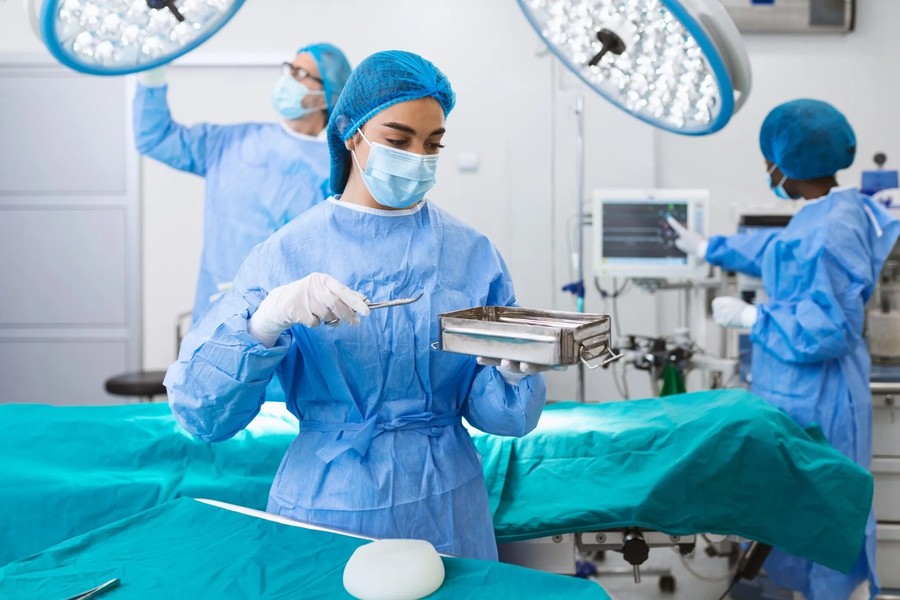
From Early Tools to Modern Technology: How Surgery Has Changed
Surgery has come a long way from its early beginnings. In ancient times, medical knowledge was limited, and the tools used were basic. Many procedures were painful and risky because people did not understand infection or proper hygiene. Over the years, science and technology have transformed the entire field. Today, surgeons work in clean environments, supported by advanced machines and precise tools. The progress of surgical instruments, along with improvements in medical understanding, has changed the way surgeries are performed. This journey from simple tools to modern technology shows how far healthcare has advanced.
Early Practices and Simple Tools
The earliest surgical attempts were often done with items made from stones, shells, or metals. People used them for basic tasks like removing foreign objects or treating injuries. There were no rules for cleanliness. Pain relief was limited or nonexistent. As a result, survival rates were low. These early tools may seem crude today, but they were the first steps toward a long history of medical innovation.
Ancient civilizations also tried to improve their techniques. Egyptian, Greek, and Indian surgeons created metal tools to cut, stitch, and treat wounds. Their ideas helped future generations shape new methods. However, infection and pain remained major problems because the importance of sterilization was not understood yet.
A Turning Point: Discovery of Anesthesia
One of the biggest changes in surgical history came with the discovery of anesthesia in the 19th century. Before this, patients had to stay awake while procedures were performed. This caused extreme pain and made surgeries difficult for doctors. Anesthesia allowed patients to sleep through operations. Surgeons could work carefully and take more time. This advancement made surgery safer and opened the door for more complex procedures.
Understanding Infection and Clean Techniques
Another major shift happened when doctors learned about germs and infections. Clean hands, sterilized tools, and disinfected environments became essential. This new knowledge changed everything. Hospitals began to use boiling water, chemical solutions, and later heat-based machines to clean tools. These steps reduced infections and saved many lives.
This improvement also changed how surgical instruments were made. Tools needed stronger materials that could withstand high temperatures. The design of instruments became more precise, allowing surgeons to perform delicate movements without harming surrounding tissues.
Rise of Modern Operating Rooms
As knowledge grew, hospitals created special spaces called operating rooms. These rooms were built to control temperature, reduce dust, and keep the environment germ-free. Only trained staff were allowed inside. Bright lights helped surgeons see clearly. Nurses and technicians worked together to arrange tools and assist during procedures. This teamwork led to better outcomes and fewer risks.
The improvement of operating rooms also supported the development of more advanced tools. Surgeons started using refined steel, improved blades, and sharper cutting devices. Every tool had a specific purpose. This allowed doctors to work with accuracy and confidence.
Technological Advancement Reshapes Surgery
The 20th century brought a wave of new inventions. Machines became part of surgeries. X-rays allowed doctors to see inside the body without cutting it open. Later, advanced imaging tools such as CT scans and MRI offered even clearer views. These technologies helped doctors plan surgeries more safely.
Laparoscopic surgery became another revolution. Instead of making large cuts, doctors used small openings and long, thin tools. A tiny camera showed the inside of the body on a screen. This method reduced pain, scarring, and recovery time. Many hospitals now use this technique for different procedures.
Digital Systems and Robotic Assistance
Robotic systems are one of the newest advancements in the surgical world. Surgeons control robotic arms through a console. These arms can move with more precision than a human hand. They help in delicate procedures where small movements matter. Although robots assist, doctors remain in full control.
Digital systems also help store patient information, track progress, and guide the surgical team. Real-time data supports better decision-making. With these tools, surgeries have become more predictable and safer.
Safer Materials and Cleaner Procedures
Modern hospitals use strong materials like stainless steel, titanium, and medical-grade plastics. These materials help create durable tools that can be cleaned and reused safely. The evolution of surgical instruments continues as manufacturers design new shapes and features that match advanced techniques.
Clean procedures also remain a top priority. Staff members follow strict rules for handwashing, equipment cleaning, and maintaining sterile environments. These steps protect patients from infections and help them recover faster.
Training and Skill Development
Along with technology, training plays an important role. Surgeons spend years learning and practicing. They use simulations, videos, and digital models to improve their skills. Hospitals also train nurses, technicians, and support staff. A well-trained team helps maintain safety and efficiency in the operating room.
The Future of Surgery
Looking ahead, surgery will continue to evolve. New technologies such as artificial intelligence and smart imaging are becoming part of medical practice. These tools may help doctors predict problems, guide procedures, and reduce human error. While the future brings exciting possibilities, the importance of safety, training, and proper tool management will always remain.
Conclusion
The history of surgery shows how much progress has been made. What began with simple stones and metal tools has grown into a field supported by advanced machines and skilled professionals. Better knowledge, improved environments, and refined surgical instruments have transformed patient care. Today, surgeries are safer, more precise, and less painful than ever before. As technology continues to advance, the field of surgery will keep changing, offering even better outcomes for patients around the world.





